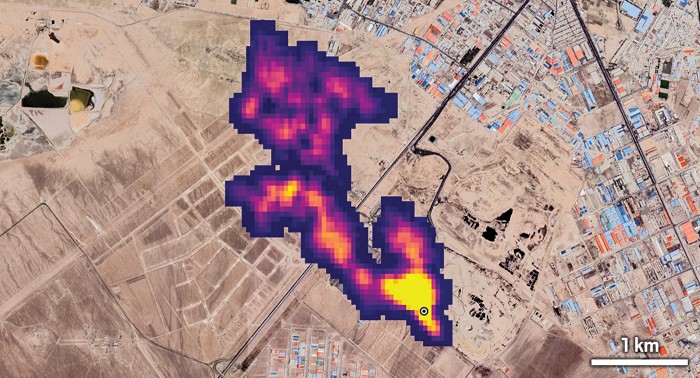Advertisement
Grab your lab coat. Let's get started
Welcome!
Welcome!
Create an account below to get 6 C&EN articles per month, receive newsletters and more - all free.
It seems this is your first time logging in online. Please enter the following information to continue.
As an ACS member you automatically get access to this site. All we need is few more details to create your reading experience.
Not you? Sign in with a different account.
Not you? Sign in with a different account.
ERROR 1
ERROR 1
ERROR 2
ERROR 2
ERROR 2
ERROR 2
ERROR 2
Password and Confirm password must match.
If you have an ACS member number, please enter it here so we can link this account to your membership. (optional)
ERROR 2
ACS values your privacy. By submitting your information, you are gaining access to C&EN and subscribing to our weekly newsletter. We use the information you provide to make your reading experience better, and we will never sell your data to third party members.
Environment
New space sensor spots greenhouse gas sources
Instrument for studying desert dust also detects methane and carbon dioxide plumes
by Priyanka Runwal
December 3, 2023
| A version of this story appeared in
Volume 101, Issue 40

In 2022, an imaging spectrometer developed at NASA’s Jet Propulsion Laboratory (JPL) was installed on the International Space Station. It was designed to study dust particles from arid areas and understand how their presence in the atmosphere affects Earth’s climate. Researchers are now using the instrument to detect greenhouse gas emissions.
In a recent study, they spotted methane and carbon dioxide plumes from oil and gas operations, power plants, landfills, and wastewater treatment facilities in the Middle East and Central Asia (Sci. Adv. 2023, DOI: 10.1126/sciadv.adh2391). The strengths of the technology are its fine-scale mapping capabilities and wide geographic coverage, says Andrew Thorpe, a research technologist at JPL and the study’s lead author.
The instrument captures images of Earth from space at a resolution of 60 m per pixel, scanning strips of land as the space station orbits the planet and covers an area about the size of South Africa every day. Such high resolution is necessary to detect plumes that are typically less than 1 km long and that contain high concentrations of methane and CO2. Instruments mounted on aircraft often provide these measurements, but their coverage is limited by how far and how often they can fly. These surveys can miss emissions that tend to be intermittent.
In the first month of the spectrometer’s operation, Thorpe and his colleagues could identify CO2 plumes from two coal-fired power plants in China that lacked continuous emission monitoring and reporting. They were also able to detect methane plumes from oil and gas operations, landfills, wastewater treatment and power plants in several countries.
“It’s an impressive system,” says Chris McLinden, an atmospheric physicist at Environment and Climate Change Canada who was not involved in the study.
Although JPL’s instrument isn’t the only space-based sensor detecting point source emissions, “it’s one piece of what will hopefully be a much larger constellation of satellites doing more or less the same thing,” McLinden says. That will help address key data gaps, he adds.




Join the conversation
Contact the reporter
Submit a Letter to the Editor for publication
Engage with us on Twitter